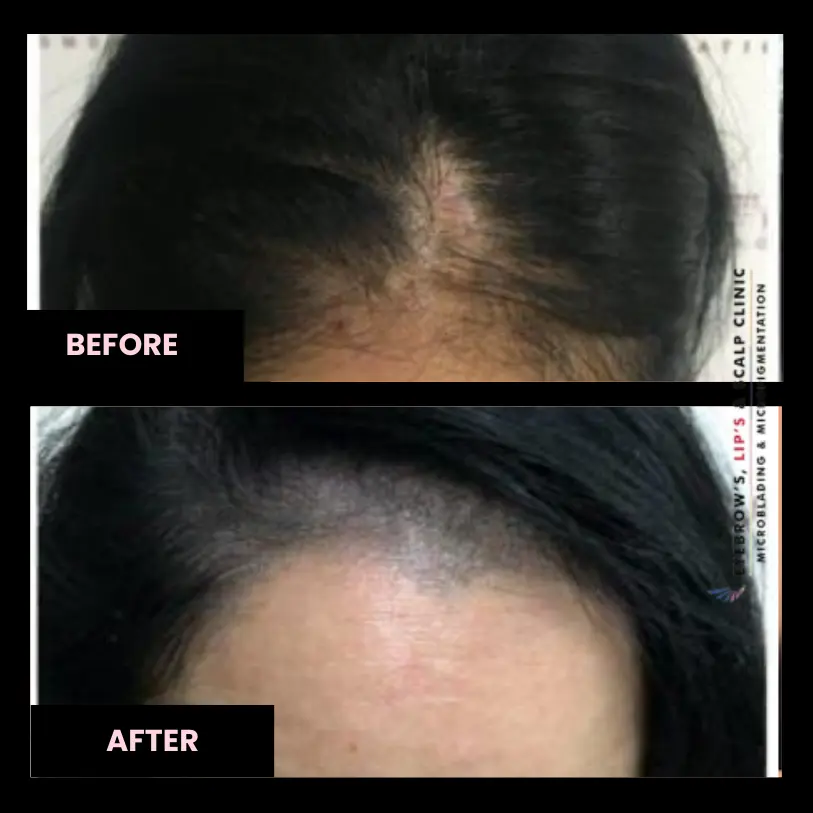Hair loss is a very common problem among many people which leads to seek solutions like hair transplant surgery. While transplants can restore natural hair growth, they do not always provide full density. So, for that Scalp Micropigmentation After Hair Transplant is an excellent complementary procedure that enhances the appearance of thickness and fills in gaps where hair may not have grown completely.
In this Article, we explore how Scalp Micropigmentation After Hair Transplant works, its benefits, the procedure, aftercare, and why it is a game-changer for hair restoration.
Scalp Micropigmentation (SMP) is a non-invasive cosmetic procedure that involves depositing pigment into the scalp to create the appearance of natural hair follicles. This technique is used to create the illusion of a fuller head of hair, conceal scars from hair transplant surgery, and blend any areas where hair density is lacking.
Unlike hair transplant surgery, SMP does not involve hair grafts or incisions. Instead, it works by using micro-needles to implant color-matched pigments into the scalp, providing a natural-looking enhancement.
Hair transplant surgery is effective in restoring hair, but it has its limitations. Some common concerns include:
Scalp Micropigmentation After Hair Transplant addresses these concerns by creating the appearance of density, camouflaging scars, and improving the overall aesthetic of the scalp.



While a hair transplant restores natural growth, some areas may appear thinner than others. SMP fills in these areas, giving the illusion of fuller coverage and making the transplant results more even.
Hair transplant procedures, whether FUE (Follicular Unit Extraction) or FUT (Follicular Unit Transplantation), often leave scars. SMP effectively hides these scars by blending them with surrounding hair follicles, making them virtually unnoticeable.
Unlike a hair transplant, which takes months to show visible growth, SMP delivers instant results. Once the procedure is complete, the scalp appears fuller and more uniform.
SMP is a non-surgical treatment that does not require incisions, stitches, or a long recovery period. Most patients experience minimal discomfort and can resume normal activities quickly.
With proper aftercare, the results of SMP can last for years. Unlike hair transplants that may require additional procedures over time, SMP requires minimal upkeep.
A fuller-looking head of hair significantly impacts self-confidence. SMP complements a hair transplant by ensuring a polished, natural appearance that enhances overall aesthetics.
The process of Scalp Micropigmentation After Hair Transplant is carefully designed to match the individual’s hair color, skin tone, and desired density. Here’s how it works:
A certified SMP specialist assesses your scalp, examines your hair transplant results, and discusses your goals. This step ensures the treatment plan is customized to your needs.
The technician selects a pigment that blends seamlessly with your natural hair color to create realistic-looking follicles.
Using micro-needles, the pigment is deposited into the scalp in small dots that mimic natural hair follicles. The procedure typically takes 2-4 hours per session and may require multiple sessions for optimal results.
Mild redness may appear after the procedure, but it subsides within a few days. Over the next few weeks, the pigment settles into the skin, and a follow-up session may be required for touch-ups.
SMP is an excellent choice for individuals who:
SMP is performed by experts who match the pigment to your hair color and apply it in a way that mimics natural follicles. When done correctly, it looks completely natural.
High-quality SMP pigments are designed to fade gradually but will not turn blue or green like traditional tattoos.
The procedure is relatively painless, with most clients describing the sensation as light scratching.
While SMP is long-lasting, it is semi-permanent and may require touch-ups over time to maintain its appearance.
When it comes to Scalp Micropigmentation in Pune, Eyebrows, Lips & Scalp Clinic stands out as the most trusted and result-driven clinic. Led by experienced professionals, the clinic specializes in scalp micropigmentation (SMP) for both men and women dealing with hair thinning, baldness, or post-hair transplant density enhancement.
With state-of-the-art technology, customized pigment matching, and a commitment to natural-looking results, the clinic ensures that every client walks away with restored confidence. Whether you need full scalp coverage, scar concealment, or density enhancement, their expert team delivers precision, safety, and long-lasting outcomes.
Book a consultation today for the best scalp micropigmentation in Pune!
Scalp micropigmentation after hair transplant is an excellent solution for those seeking to enhance their hair restoration results. By adding density, concealing scars, and creating a fuller scalp, SMP complements hair transplants perfectly. Whether you’ve undergone FUE or FUT, SMP can help you achieve a more natural, confident look.
If you’re considering this procedure, consult with Eyebrows Lips & Scalp Clinic to determine the best approach for your needs.
WhatsApp us